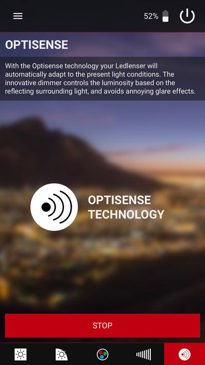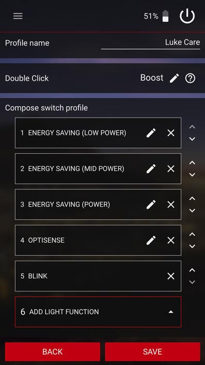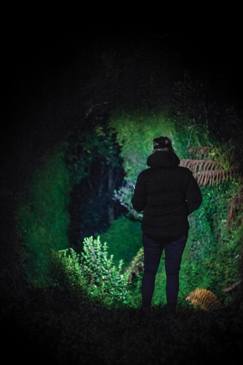The MH11 has as much power and technology as LedLenser can pack into a front mount headlamp, and it’s pretty impressive. The 1,000 lumens on boost will reach out to 320m, and still get to 300m on high (750 lumen).
Of course, all of that comes at a cost in weight, it’s the heaviest in the range at 179g so it isn’t a torch for expedition trips. But for general use such as the power to spotlight rabbits or navigate your way out of the estuary for a pre-dawn fish, the MH11 is unbeatable. The power is supported by an impressive 3200mAh battery, twice the 1550mAh capacity of the MH8 we reviewed back in Issue 67. It also retains the proprietary magnetic charger fitting we first saw in that issue which we’re seeing more and more with the new models (this improves the waterproofing rating).
Even though the top strap is removeable, given its weight it’d recommend keeping it on. It stops the beam flopping around distractingly if you’re grunting your way up a hill.
The magnesium alloy body reduces weight and provides a robust chassis to an IP rating of 54 (protection against dust and splash-proof). The focus ring is knurled, with tabs as well so there’s no trouble rotating it with gloved or cold hands.
But, despite all of these features the most startling is the Bluetooth interface through the Ledlenser Connect App. I’ll admit that I did think what on earth do you need an app for a headlamp for. But remote control opens a world of possibilities, especially for a photography enthusiast like myself.
It also introduces a battery indicator. I’m a huge fan of metrics, I like to know exactly what any variable is doing even when I don’t need to and for years only knowing a torch was flat when it started blinking was irritating. Now you can see the exact battery percentage, select the light mode, slide the intensity to exactly what you like, or leave it on Optisense Mode all from your phone instead of cycling through buttons. As a bonus you can now turn the torch off in the hut without before getting in your sleeping bag!
I found the Optisense technology pretty intelligent. If you are using it for overnighters or evenings where battery conservation isn’t a priority, I found leaving it on Optisense more than adequate. It stopped me searing my retinas if I pulled a map or anything reflective up but gave me plenty of light when simply navigating.
As part of the app you can customize up to eight switch profiles. Switch profiles are presets which let you select the order in which the different modes appear. You can re-arrange the order, delete some or basically do whatever you like. For example you can set Profile A to start with Optisense on the first click, then cycle through the respective power settings. Profile B (the name is also customizable) could be that the green LED comes on at the first click, followed by blink or any combination that you like. You can also add a special function to any profile that is accessed by a double-click.
Brightness (Boost) | 1000 lumens |
Brightness (High) | 750 lumens |
Brightness (Mid) | 300 lumens |
Brightness (Low) | 10 lumens |
Beam range (Boost) | 320m |
Beam range (High) | 300m |
Beam range (Mid) | 200m |
Beam range (Low) | 30m |
Burn time (High) | 4 hours |
Burn time (Mid) | 8 hours |
Burn time (Low) | 100 hours |
Water/ Dust resistance | IP54 |
Weight (incl. batteries) | 179g |
Battery | Li-ion 3.7V rechargeable (included) |
SLT light functions | Low, Medium, High, Boost, Blink, S.O.S, Strobe |



